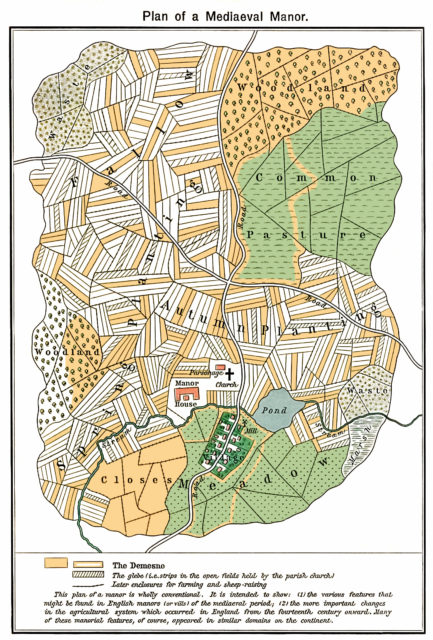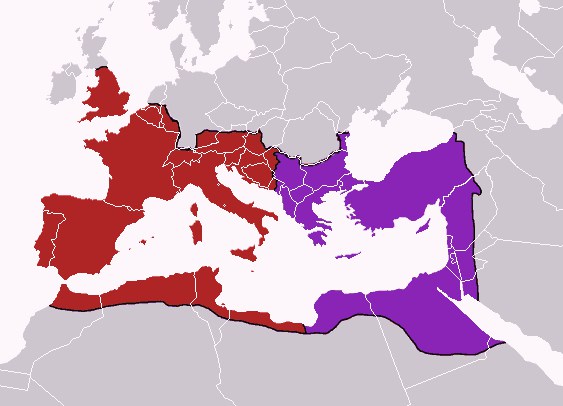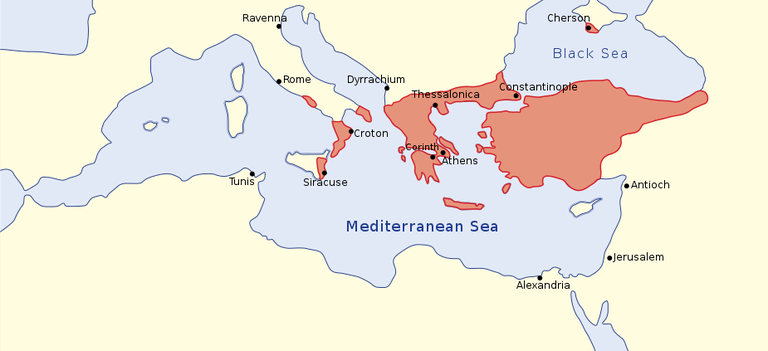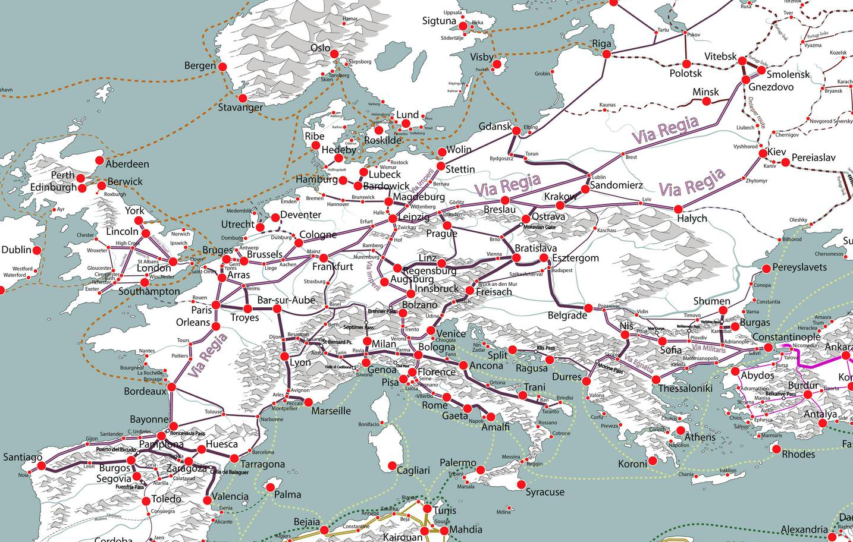Extra Credits
Published on 3 Nov 2018Rollo the Walker led the Great Heathen Army and had his sights set on sacking Paris, in a time when relations between the Vikings and the Franks had become, essentially, getting paid to raid. Eventually his sights would turn to stability — and he became the founder of Normandy.
Join us on Patreon! http://bit.ly/EHPatreon
November 6, 2018
Viking Expansion – Rollo the Walker – Extra History – #2
October 30, 2018
Viking Expansion – The Serpent-Riders – Extra History – #1
Extra Credits
Published on 27 Oct 2018The medieval Scandinavians left an impact not just on Greenland and Iceland, but on France, England, Russia, and even briefly North America. But how did Scandinavian society begin, and what incited its voyage across the seas?
Join us on Patreon! http://bit.ly/EHPatreon
September 19, 2018
The Byzantine Empire should really be called the “Medieval Roman Empire”
Sean Gabb makes the case for the least well-known part of the Roman world that outlasted the western empire by a thousand years:
Properly considered, the history of what I will from now call not the Byzantine Empire, but the Mediaeval Roman Empire, is perhaps the most astonishing instance of how courage and determination can keep civilisation alive in the face of the most forbidding and apparently overpowering challenges. In setting out my argument, I hope you will forgive me if I begin with an introduction covering much that many of your will know at least as well as I do, but that may not be so familiar to those reading the text or watching the speech on YouTube.
If you look at the first of the maps that I have put on your tables, you will see the Roman Empire as it was in the year 395 AD. This shows the Empire at something close it its greatest extent. The conquests that Trajan made to the north of the Danube and east of the Euphrates have been given up. But it includes the whole of the Mediterranean World and its various hinterlands – an area stretching from the North of England to Upper Egypt, from Casablanca to Trebizond. In that year, however, nearly a century of political experiments is formally ended with the division of the Empire into two administrative zones. There is the Western or the red Empire, ruled by an Emperor in Rome or Milan or Ravenna. There is the Eastern or the purple Empire, ruled by an Emperor in Constantinople.
If you look at the second map, dated roughly 650 AD, you will see that the Western Empire has disappeared. Excepting North Africa and parts of Italy, now ruled from Constantinople, the whole of the Western Empire has disappeared – replaced by a set of barbarian kingdoms from which modern Europe takes its origin. The Eastern Empire itself has lost both Syria and Egypt to the Arabs.
If you look at the third map, dated roughly 867 AD, you will see that the Empire has suffered the further loss of Cyprus and North Africa and most of Sicily. Nevertheless, what we have in that year should undeniably be called the Mediaeval Roman Empire. It has weathered the storm of the Early Middle Ages. It is the richest and most powerful state in the Mediterranean World. Indeed, during the next few centuries, it will expand. It has already reconquered Greece. It will conquer the Bulgarian Kingdom and re-establish its ancient frontier on the Danube. It will even retake Antioch and make Egypt for a while its economic and diplomatic client.
After 1071, the Empire falls on evil days. In that year, the Turks deprive it of its Anatolian heartland. But this loss is stabilised and in part reversed by a skilful handling of the Crusades. There is another disaster in 1204, when the Venetians take and plunder Constantinople. But this is not the end. The Empire is restored in large parts in 1261; and, even if as little more than a city-state based around Constantinople, it continues to the final Turkish conquest of 1453. Indeed, the formal extinction of the Empire comes nearly a decade after 1453, with the annexation of its last territories in Southern Greece.
There was a time when school textbooks in England dated the fall of the Roman Empire to 476 AD. Its continued survival for a thousand years after then had to be explained, where admitted, by taking a contemptuous view of what was called the Byzantine Empire. See, for example, W.E.H. Lecky:
Of that Byzantine empire, the universal verdict of history is that it constitutes, without a single exception, the most thoroughly base and despicable form that civilization has yet assumed. There has been no other enduring civilization so absolutely destitute of all forms and elements of greatness, and none to which the epithet “mean” may be so emphatically applied… The history of the empire is a monotonous story of the intrigues of priests, eunuchs, and women, of poisonings, of conspiracies, of uniform ingratitude.
Lecky is one of my favourite historians. But, if you look even at the mediaeval Greek and Italian historians of the Empire, you will see that this is a bizarre judgement. Undoubtedly, these historians tended to focus on intrigues in and about the Imperial Palace. But they also record much else. They record the story of a rich and powerful empire, directed with high military and diplomatic ability – an empire in which slavery and the death penalty have been almost abolished, where people lived, and knew that they lived, under a set of divinely-ordained laws that protected life, liberty and property to a degree unknown in any other mediaeval state.
September 14, 2018
Are Guards Historically Accurate? | Feature Enquiry
Feature History
Published on 22 Aug 2018Use this link to get your first 2 months of Skillshare for FREE! http://skl.sh/featurehistory2
———————————————————————————————————–
Often fantasy and medieval media will show armoured guards patrolling settlements and enforcing the law. Is that historically accurate? No.
———————————————————————————————————–
Patreon
https://www.patreon.com/FeatureHistory
https://twitter.com/Feature_History
Discord
https://discord.gg/Zbk4CvR
———————————————————————————————————–
I do the research, writing, narration, art, and animation. Yes, it is very lonely
Music by Epidemic Sound: http://epidemicsound.com
August 31, 2018
Experimental strip farm demonstrates why strip farming was eventually abandoned
Tim Worstall uses an article in the Guardian about a National Trust experimental replication of medieval farming patterns to point out exactly why modern farms do not use them:

Plan of a fictional medieval manor. The mustard-coloured areas are part of the demesne (owned by the lord), the hatched areas part of the glebe (reserved to support the parish priest).
Illustration from William R. Shepherd’s Historical Atlas, 1923 via Wikimedia Commons.
The proof of the inefficiency is in the presence of that lots more wildlife. We’re trying to grow food for humans to eat recall. So, more wildlife eating off the same earth is less food for humans. We have more butterflies around? That’s nice, but that does mean more caterpillars munching on those now not for humans crops. Hen harriers? Great, but they’re eating the mice and the voles living off those crops. Land that’s growing wildflowers isn’t growing grain or veggies for us, is it?
Sure, it’s nice to have hen harriers, great to have wildflowers. But their very existence on this land shows that this method of farming is less efficient at doing the job of farming – growing food for us. Which is why we abandoned this method of farming of course. Under the simple and basic pressures of trying to gain more output from our inputs. And yes, land is, obviously enough, an input into farming.
And if we’d like to have flowers and harriers? Then we should be using the most efficient farming methods on those areas we do farm so as to leave more space, more land, for the pretty things we’d also like to have. That is, prairies of glycophosphate drenched wheat for us, the other 30 or 50 or 70% of the land left alone for them. And the more chemicals we use on our bit the smaller that bit devoted to us is going to be.
The very fact that we’ve more wildlife as a result of this inefficient farming method shows us that we must be using the more efficient industrial methods. You know, to save the wildlife?
July 1, 2018
Mapping medieval trade routes
Open Culture linked to a fascinating new map by a Swedish grad student, showing trade routes during the Medieval period:
“I think trade routes and topography explains world history in the most concise way,” Månsson explains in the very small print at the map’s lower right corner. “By simply studying the map, one can understand why some areas were especially important–and remained successful even up to modern times.”
The map covers 200 years, spanning both the 11th and 12th centuries, and “depicts the main trading arteries of the high Middle Ages, just after the decline of the Vikings and before the rise of the Mongols, the Hansa and well before the Portuguese rounded the Cape of Good Hope.”
It also shows the complex routes already available to Africa and Asia, and the areas where Muslim and Christian traders would meet. The open-to-trade Song Dynasty ruled China, and the competitive kingdoms in the Indonesia region provided both Muslims and Europeans with spice.
Looking like a railway map, Månsson’s work shows how interconnected we really were back in the Middle Ages, from Greenland in the west to Kikai and Kagoshima in the East, from Arkhangelsk in the frozen north to Sofala in modern-day Mozambique.
The full-sized, high-resolution map can be downloaded here.
Update: Tim Worstall was kind enough to link to this post and uses Månsson’s map to help explain the gravity model of trade:
A standard observation is that places which are closer together trade with each other more than places which are further apart. Add to that the thought that larger economies will trade more with other larger economies – well, you know, more economic activity means more economic activity – and you get the gravity model of trade. So, therefore Britain’s trade future lies with those places nearby, in the EU, than with places further away like the Commonwealth or the US.
This is, sadly, actually the level of debate over Brexit at times. We should trade with France because it’s 26 miles away, so there. The point being that while the gravity model is true – among the best empirically supported of all economic observations – that’s not actually what it says. Rather, that those places which are closer by trade distance trade more with each other. Trade distance being a more complex point than mere geographical location.
[…]
The point here being that by showing the trade routes it is showing us this trade, or perhaps economic, distance which is what the gravity model is about. Valencia and Palma were very much closer – and trade very much more – than Valencia and Toledo, despite roughly equal distances crowfly wise.
May 24, 2018
Medieval tank – The 13th Century Knight I IT’S HISTORY
IT’S HISTORY
Published on 23 May 2018This time we will take you back to middle ages. It’s 13th century – what did medieval armor look like?
April 28, 2018
How A Man Shall Be Armed: 14th Century
Royal Armouries
Published on 20 Feb 2017Discover how the introduction of plate armour changed the way knights of the 14th Century armed themselves for battle.
April 12, 2018
LANDSKNECHTS – most brutal mercenaries of the Renaissance | IT’S HISTORY
IT’S HISTORY
Published on 11 Apr 2018Today we are going to tell you about The Landsknechts – German mercenaries from the 16th century with a very formidable reputation.
Feature History – War of the Roses
Feature History
Published on 21 Feb 2017Hello and welcome to Feature History, featuring the War of the Roses, a video that is certainly not early this month, and a fancy new intro.
Helpful Family Tree
http://imgur.com/gallery/U3z6gPatreon
https://www.patreon.com/FeatureHistory
https://twitter.com/Feature_History
———————————————————————————————————–
My new hire, me, did a great job on the writing, narration, art and animation.A plethora of the paintings showcased in this video are by Graham Turner, you can purchase his work here;
https://www.studio88.co.uk/acatalog/medieval_prints.htmlMusic
Marcin Przybyłowicz – Wine Wars
Marcin Przybyłowicz – Merchants of Novigrad
Marcin Przybyłowicz – The Mandragora
Marcin Przybyłowicz – Breaking In
Marcin Przybyłowicz – I Name Thee Dea And Embrace Thee As My Daughter
Marcin Przybyłowicz – Go For It
Marcin Przybyłowicz – A Story You Wouldn’t Believe
April 6, 2018
March 3, 2018
How A Man Shall Be Armed: 11th Century
Royal Armouries
Published on 20 Feb 2017Discover how a Norman knight of the 11th Century would be armed for battle with the finest equipment available.
February 22, 2018
Curse of the FRIDAY THE 13TH I IT’S HISTORY
IT’S HISTORY
Published on 21 Feb 2018On today’s episode we are going to talk about the end of the Templar Order and the famous curse of Jacques de Molay.
February 15, 2018
The rise of the bourgeoisie
Ed West on the beginning of the end of military aristocracy in Europe and the rise of the merchant class:
The medieval system began with the Franks, whose mastery of cavalry made them the most powerful tribe in the former western empire. Later, the Normans used horses in far larger numbers and developed the cavalry charge, used to lethal effect at the Battle of Hastings. Cavalry underpinned the European social order because only those with a reasonable amount of land could afford the destrier warhorse, which cost 30 times as much as a regular farm animal and could carry up to 300lbs in weight, including 50lbs of iron armor — itself very costly.
The sons of the aristocracy were mostly schooled in warfare from a young age and despised learning and trade, which were viewed as dishonorable, leading to an excess of landless younger sons whose only skill was fighting, many of whom found their way to wars, or caused them, or made a living at absurdly dangerous tournaments. Cavalry developed certain rules — chivalry, which primarily concerned the treatment of aristocratic prisoners — as well as an idealization of the aristocratic warrior through the stories of Arthur, Lancelot, and Roland that singers recited at the courts of dukes and counts.
This order was first shaken in 1302 when France’s cavalry confidently marched north to suppress a revolt by the Flemish. Flanders is not naturally rich in resources — Vlaanderen means flooded — but its people had turned swamps into sheep pastures and towns, building a cloth industry that made it the wealthiest part of Europe, its GDP per capita 20 percent greater than France and 25 percent better than England. The wealth of Flanders’ merchants was such that when Queen Joan of France visited, she afterward wrote in horror that: “I thought I would be the only queen there, but I find myself surrounded by 600 other queens.”
The Flemish were traders, not knights, which is why the French were sure of victory. And yet, with enough money to pay for a large, well-drilled infantry, they were able, for the first time, to destroy the cavalry at the Battle of the Golden Spurs. It was the beginning of the end. No longer could the aristocracy simply push around the bourgeoisie, and as the latter grew in strength, it undermined the violence-obsessed culture of the nobility.
[…]
The aristocratic class that wished for glory in battle was in retreat, and yet, despite this, won the narrative. While in exile in Burgundy, King Edward had met a London merchant by the name of William Caxton who in his spare time transcribed books for aristocratic women. Exhausted at the toll of work, he learned through business contacts of a new technology in Germany, called movable type; when Caxton brought a printing press back home one of the most successful books he published was Thomas Malory’s The Death of Arthur.
It became the influential work in celebrating the Heroic Narrative of the Middle Ages, but the aristocratic ideals it harked back to were mostly a sham and ultimately rested on the rusty sword (and Malory was a convicted rapist). No account of any trader or banker could ever compete with these knights’ tales, of course, and yet you could argue that they were the real heroes who shaped our world.
February 3, 2018
Saladin – the Sword of Islam – IT’S HISTORY
IT’S HISTORY
Published on 2 Feb 2018Saladin was the famous Muslim leader during the time of the Crusades.







